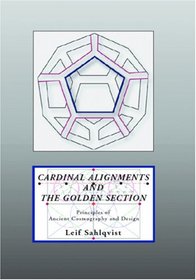Search -
Cardinal Alignments and the Golden Section: Principles of Ancient Cosmography and Design
Cardinal Alignments and the Golden Section Principles of Ancient Cosmography and Design
Author:
Were the dimensions of the Earth known in northern Europe already before 2000 BC? Completely new evidence is disclosed in this book of an accurately laid out meridian along which Late Neolithic gallery-graves were systematically aligned. This enterprise involved what appears to be accurate measurements of the polar circumference and the divi... more »
Author:
Were the dimensions of the Earth known in northern Europe already before 2000 BC? Completely new evidence is disclosed in this book of an accurately laid out meridian along which Late Neolithic gallery-graves were systematically aligned. This enterprise involved what appears to be accurate measurements of the polar circumference and the divi... more »
ISBN-13: 9781419621574
ISBN-10: 1419621572
Publication Date: 1/27/2006
Pages: 494
Rating: ?
ISBN-10: 1419621572
Publication Date: 1/27/2006
Pages: 494
Rating: ?
0 stars, based on 0 rating
Publisher: BookSurge Publishing
Book Type: Paperback
Members Wishing: 0
Reviews: Amazon | Write a Review
Book Type: Paperback
Members Wishing: 0
Reviews: Amazon | Write a Review
Genres:
- Arts & Photography >> Art >> Religious
- History >> Europe >> General
- Engineering & Transportation >> Architecture >> General




